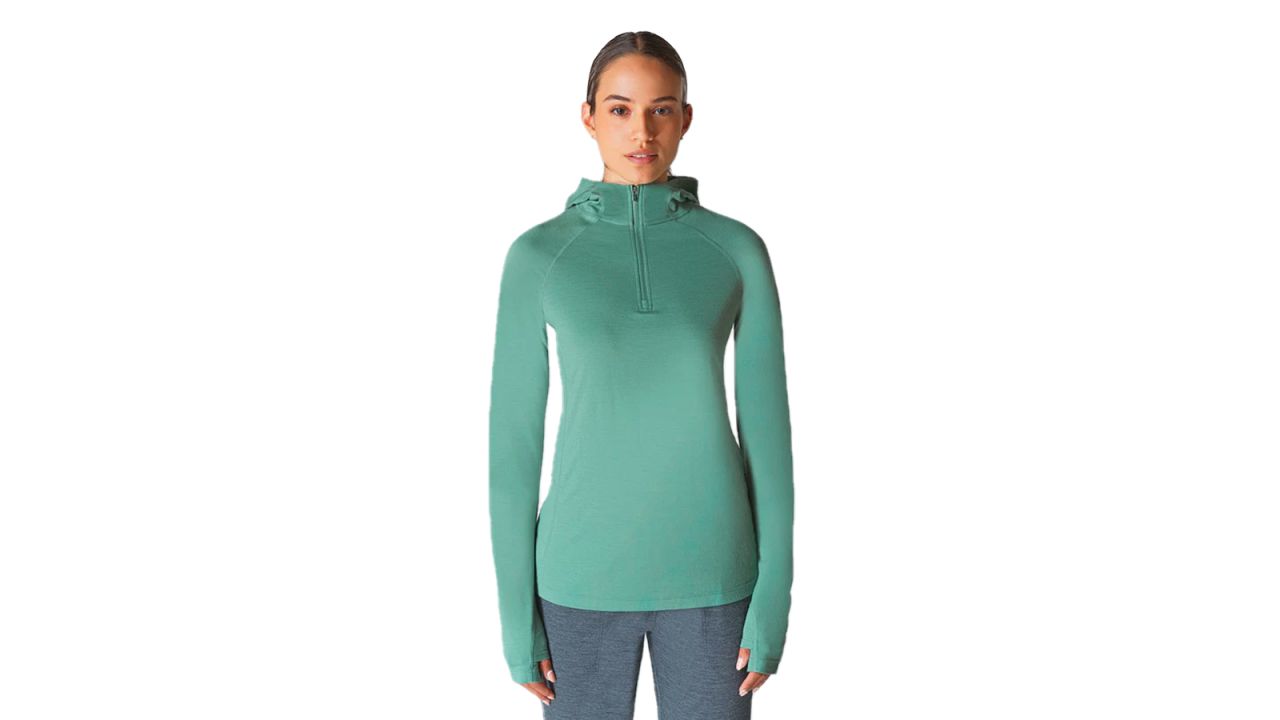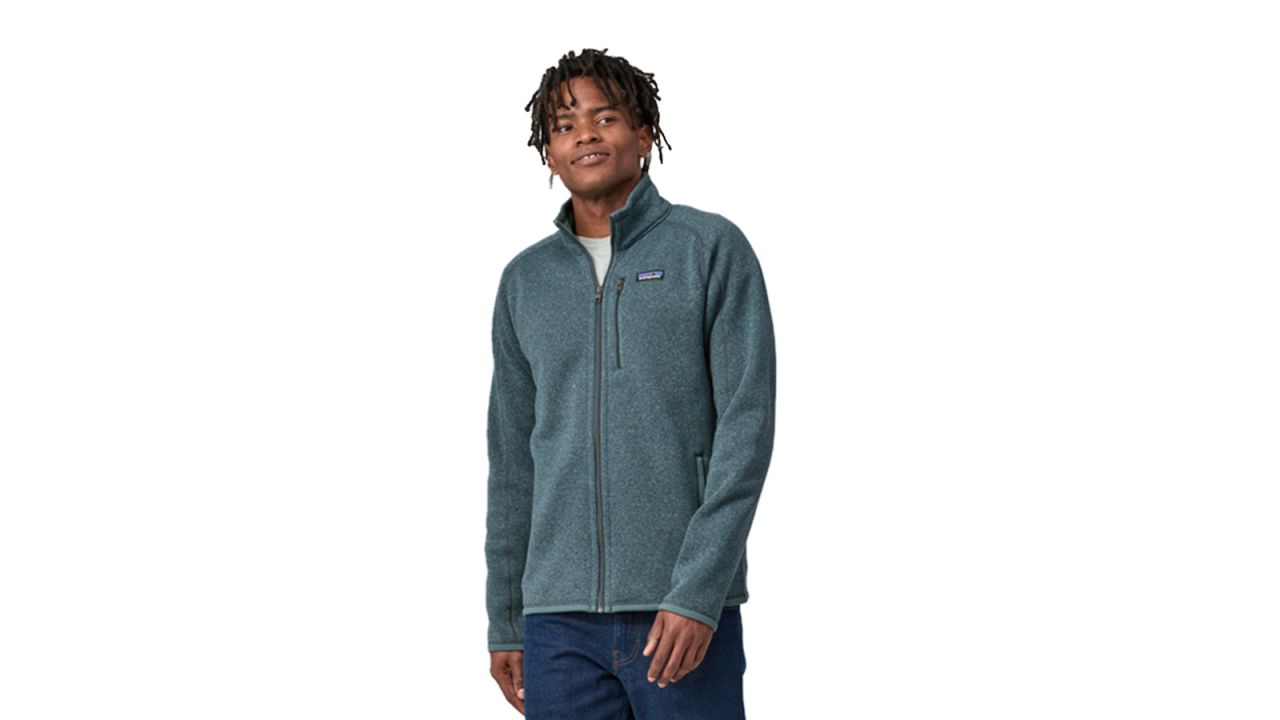It’s common knowledge: We have a plastic problem. At this point, we’re oozing one trillion pounds of plastic annually yet we’re showing no signs of stopping. In fact, plastic waste is projected to triple by 2060, with half of that ending in a landfill.
We’re practically swimming in the stuff — literally.? Microplastics — small pieces of plastic measuring 5 millimeters or smaller — fill our rivers, lakes and oceans, and have even been found in our drinking water. While little is known about their impact, they’re considered problematic due to their persistence (an inability to break down) and small size that makes them easily ingested by aquatic organisms.
The apparel industry is a huge contributor to the microplastic problem thanks to its reliance on polyester, but there is one villain that ranks among the worst: your cozy fleece jacket. Derived from fossil fuels, polyester is plastic, so you’re basically wearing a big plastic bag. All apparel sheds microfibers when it goes through the washing machine, but polyester apparel is notably worse. According to Rachel McQueen, an associate professor at the University of Alberta who specializes in textile science, it’s due to the quantity.
“If we had a small amount of it, it wouldn’t be such a big deal,” McQueen says. “But it’s the dominant fiber now and it is going to persist in the environment for much longer than cotton or other fibers.”
Why fleece is bad
Why is your super-soft fleece the starring bad guy? Because it’s super soft. Those delicate fleece fibers are very thin, since they are constructed with small microplastics that break off easier than they do in other polyester clothing. In fact, one study found that a single fleece garment can shed up to 250,000 microfibers in a single wash — all of which head straight into the water. By comparison, this is far worse than non-fleece polyester: fleece sheds 7,360 fibers/m?2/L per wash while regular polyester sheds 87 fibers/m?2/L.
The problems don’t end there, though. “Microplastics also have the potential to store toxic substances, such as pesticides and heavy metals, which can then enter the food chain and pose risks to humans,” says Frej Lewenhaupt, a textile engineer and co-founder of Scandinavian textile care brand Steamery.
So, what should you do if you already own a fleece jacket? McQueen recommends two things: hang onto it for as long as possible and wash it only when necessary. When it’s finally so gross that your partner won’t stand in the same room as you, snag a product like the Guppyfriend Washing Bag. Or, do one better: install a Planet Care Microfiber Filter on your washing machine that will catch all microfibers (not just microplastics) from every load of laundry you ever do.
But still, the day is going to come when you need a new jacket or sweater. In the outdoor industry in particular, fleece is still a dominant fiber thanks to its performance capabilities. However, sustainable fashion brands are starting to branch out and create alternative products to replace our reliance on fleece. While no one has created the perfect replacement yet, these options still mark progress.
What you should buy instead
In general, experts recommend natural fibers in place of fleece. “Natural fibers like cotton, wool and bamboo are biodegradable and renewable,” says Lewenhaupt. “They also provide warmth, comfort and great breathability.”
Of course, some natural fibers are better suited for outdoor adventures than others. Cotton is more breathable than synthetic fabrics, but very absorbent: It holds 24-27 times its own weight in water. This means cotton will saturate with your sweat very quickly and grow heavy. Since it doesn’t dry fast, you’ll be wearing a cold and wet shirt against your skin. In hot, desert conditions, this could be a good thing but in the winter, it can lead to hypothermia.
Wool is arguably the most popular natural fiber used in technical apparel, and for good reason: You can be a dirtbag. “Natural protein fibers like wool are naturally antibacterial and can therefore be washed less frequently,” says Lewenhaupt. Sheep grow wool as a barrier against heat and cold, so it makes sense that it does the same for humans. It’s a poor conductor of heat, so your body gets to keep that warmth rather than transferring it to your apparel. Wool is also naturally water-resistant (have you ever seen a soaked sheep?) and wicks moisture away, so it’s a great fiber to use in technical conditions with nasty weather. Of course, it’s not perfect and critics claim that wool production can be equally harmful due to the potential inhumane treatment of animals and increased resource consumption. “Wool does have the land use and the pesticide fertilizer runoff and the methane gas from the sheep,” says McQueen. “But ultimately, a very small proportion of the fiber market is wool. Wool is doing a lot less damage to our planet than the overall excessive mountain of consumption we have of polyester.” Wool items are often heavier than fleece too, which can be a determining factor for those carrying backpacks.
Alpaca is lesser known but still worth considering. In fact, it is often recommended over sheep’s wool in regards to sustainability. Alpaca fibers are hollow which allows them to trap more air inside. This makes them technically warmer than sheep’s wool per gram of fiber, although you’d have to wear shirts constructed with the same amount of fibers to notice the difference. Alpaca is also a protein fiber so it’s still antibacterial, and alpacas are easier on the environment when compared to sheep.
If you’re determined to stick to fleece, at least opt for recycled polyester. But if you choose that route, be aware that most experts agree that natural fibers are a much better option. “Recycled polyester still emits microplastics,” says Lewenhaupt, noting that recycled polyester is actually derived from post-consumer plastic water bottles (and not recycled synthetic fibers, as some consumers may think.) “It’s not biodegradable and can still persist in the environment for hundreds of years.”
However, all is not lost. Recycled polyester is better for the environment since production requires up to 59% less energy expenditure than virgin polyester and it uses significantly less water. And, recycled polyester does have performance benefits, as it’s often more durable and can be combined with membranes to create insulation and wind protection.
We’ve compiled nine layers to shop next time you’re thinking of buying a fleece jacket.
It’s not a jacket, but the All-Paca Fleece Hoodie has become my must-have midlayer when I want lightweight warmth. It’s constructed from 100% alpaca fiber which means there aren’t any plastic derivatives hidden on the hoodie, so it’s going to degrade far better at its end of life compared to a traditional fleece. While the alpaca fiber itself comes from Peru, the fabric and garment are all made in the United States. For American consumers, this means your hoodie cuts down on the greenhouse gasses that often come into play with overseas imports.
The All-Paca Hoodie performs well, too. Just like other natural fibers like sheep’s wool, alpaca dries relatively quickly and continues to insulate when wet. I wore this hoodie on a recent rainy trip to Yellowstone National Park when the rain gods dumped on us during our day of fly fishing, and I never felt cold or soaked to the bone.
It looks like a traditional fleece, but when you get a little closer, you’ll realize this Icebreaker RealFleece doesn’t have a speck of polyester in the fabric. Instead, Icebreaker mixed merino wool with tencel to create an extremely warm and sharp-looking jacket that looks nice enough for an evening on the town.
While most of us know that wool is a high-performing natural fiber not affiliated with fossil fuels, tencel is less understood. According to McQueen, it’s a popular eco-fiber made from wood pulp (derived from fast-growing trees) dissolved in non-toxic chemicals that get recycled during the process. And, it manages moisture well, just like merino wool. While the RealFleece jacket is too pretty to totally thrash in the wild, this jacket is definitely warm enough to handle anything shoulder season threw my way in the Colorado Rockies.
Fleece is often used for warmth as a midlayer, but this Kodiak Wool Fleece dials up the temps without any synthetic fibers. The fiber content is 95% merino wool and 5% Spandex, yet you can still wash and dry it without fear of the hoodie falling apart. And the brushed merino on the inside feels as cozy as brushed fleece while adding to the overall warmth.?
There are plenty of technical features, too. The hood is helmet-compatible and three pockets offer plenty of storage. The women’s version does have a trim fit, so consider sizing up if you’re in between sizes — or check out the men’s version, which runs a bit boxier.
It’s heavy and durable yet it’s made with 100% merino. Ibex uses a double-knit construction that offers tons of warmth, yet the inherent elasticity in merino means you won’t struggle with mobility if you’re hiking or skiing. The Shak has a nice aesthetic and clean lines too, so you could easily wear it to a restaurant without feeling under-dressed.?
It boasts all of wool’s natural benefits, too. It doesn’t wrinkle and it’s antimicrobial, so you won’t need to worry about bacteria in between washes. And, let’s go ahead and deliver the best news: Contrary to outdated stereotypes, it doesn’t itch.
Wool isn’t relegated to cold weather. The Indie Hoodie works well in both warm and brisk weather thanks to a specialized steaming process that makes the fabric feel cooler against your skin. This means the Indie is a great bet for high alpine adventures in the summer and mid-week ski voyages in the winter.
And still, it’s 100% merino wool; there are no synthetic fibers anywhere on this hoodie. The Indie also has a scuba-type of hood that easily fits beneath helmets, as well as a quarter-zip to dump heat when the temperatures surge.
If you’re wanting a lightweight hoodie to grab on the go, look no further than Smartwool’s Thermal Hoodie. Made from 100% merino wool, the Thermal moves well without a lot of additional bulk. It’s not as heavy-duty as others on this list, but it makes for a great layer on mild spring days.
And, double bonus: it’s gender neutral. While the Thermal was designed on the men’s design block, it is a fully unisex item. If you identify as a man, go ahead and order your traditional size. If you’re a woman, size down one size.
Like the All-Paca Hoodie, this midlayer is made from 100% alpaca, with no synthetic fibers anywhere. Thanks to the thermoregulation of alpaca, this midlayer easily wicks away sweat and dries relatively quickly. It also sports a trim, athletic fit that sits close to your skin as a second layer. For athletes looking for a technical item in the mountains, this could be your jam.
Bummer: It can be a pain to wash. Throw it in on the gentle and cold cycle and lay flat to dry.
Patagonia was the brand to first pioneer fleece but when they realized its negative environmental impacts, they subsequently became the first brand to turn trash into fleece: recycled polyester. Their very popular Better Sweater Fleece line uses 100% recycled polyester along with a low-impact dye process that uses less water and energy compared to traditional dyeing efforts.?
Patagonia’s overall environmental stance is also noteworthy, particularly since it routinely lobbies against the oil and gas industry. In creating its recycled fleece line, the brand has also conducted its own studies that are worth looking into.
Outdoor enthusiasts tackling technical mountain adventures love fleece for its lightweight warmth, but the Ortovox Fleece Hoody offers both those performance characteristics without the use of virgin polyester. This hoodie uses a mixture of 64% recycled polyester and 30% virgin merino wool that comes from ethical sheep farms.?
My partner recently took his Fleece Hoody up the local 13,000-foot mountain for a spring ski ascent, and he said it hung with him through the sweat, snow and high winds. For folks who need a technical item to take into the high alpine, the Fleece Hoody is a better bet than a traditional fleece — just hang onto it for a while and try not to wash it.





























